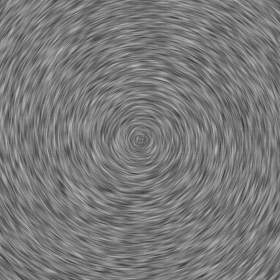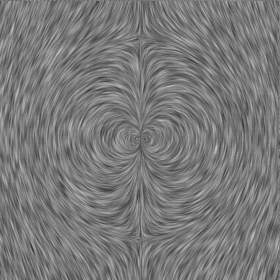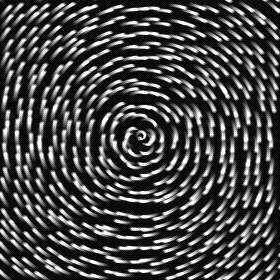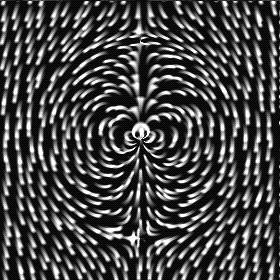| TexMap LIC leverages texture mapping (GL_TEXTURE_2D)
and buffer accumulation (GL_ACCUM_BUFFER_BIT), two OpenGL-compliant
hardware capabilities, to accelerate LIC image generation. A Cartesian mesh
is initially established with the same resolution as that of the flow field.
As the mesh is successively
warped in the flow direction, the
noise texture is advected through texture mapping to produce
a sequence of intermediate textures, which are sent to the accumulation
buffer (glAccum(GL_ACCUM, fWeight)) where the LIC image is finally
obtained via texture convolution ( glAccum(GL_RETURN, 1.0f), Figure
1 ). Either white noise (Figure 2) or
sparse noise (Figure 3) can be employed as the
input texture. |



